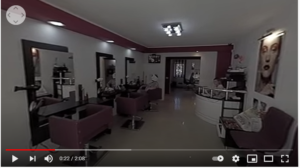Logistic

THEORETICAL FRAMEWORK
General:
To familiarise Romanian local community with immigrants culture
To make local community more sensitive to the needs of other cultures
To build intercultural competences
Goals` taxonomy according to Bloom
A) Cognitive goals:
-
to address a specific situation by using VR movie
-
to understand the situation of foreigners in Romanian local communities deeper by total immersion in semi-real situation
-
to learn about immigrants culture
B) Emotional goals:
-
to ensure emotional security in terms of welcoming New/Different/Other culture and its representatives to local services (as customers)
-
to immerse participants in a semi-real situation and connect it with personal experiences and emotions
C) Psychomotor goals:
-
to deal with particular aspects of the behavior related to the situation of immigrants using different services
-
to deal with particular aspects of the behavior linked to the traditions and customs of immigrants cultures
- deeper understanding of the situation of immigrants (as customers) using different services
- bulding intercultural competences that are ready to use in a situation of welcoming immigrants
- building sens of security in situations related to the topic
discussion, VR movies, drama, working sheets, active learning methods
Trajectory of the teaching process
The following teaching session aims to introduce Romanian local community to immigrants culture and immigrants needs. During the session participants will experience and practice different situation related to everyday life in intercultural environment. Throughout VR movies they will immerse into Romanian beauty centre and meet immigrant with specific needs.
Warm up game: “Tell me the story of your name” game. Presenter holds the ball and tell the story of his/her name – for example its meaning, who gave him/her name or how much he/she like it. After short story he/she throws the ball to another participant asking the questions: What is the story of your name? Participants throw the ball until everyone had the opportunity to tell few words about his/her name.
| Activity Title | Activity Description |
|---|---|
| Before video watching | Brain storm Presenter asks participants to tell their first associations with all services and facilities that immigrants may use in everyday life. Presenter writes down all the answers on the white board and starts discussion on the way that participants and immigrants use the services and facilities - discusses differences and similarities. Presenter explains misunderstandings and wrong thinking. Leading person may also address short presentation and comments on immigrants culture. |
| Before video watching | Finding a solution Presenter ask participants to bring up their experience when they were facing a new situation: how did they feel, when they could not speak the language ect. Presenter divides the group into teams of 4-5 participants and organises separate space for work. Each group of participants sits into the circle. Presenter delivers to each group the colorful sheet of paper with the following headings written in the middle: “Using the local services / Enjoy the local entertainment sector/ Experiencing educational facilities/ Visiting neighborhood”. Presenter encourages participants of each group to think over: Participants share their thoughts within the group and write it down. After 10 minutes Presenter asks groups to share their work in the forum. Participants try to collect good practices that appeared during the discussion and write them down. |
| Video watching | Watching the VR movie “There is always an amicable solution” does not need any preparatory tasks. After watching the video presenter encourages participants to share their experience and emotions in the forum. |
| After watching the video | Drama activities Presenter divides group into teams of 4-5 participants and organises separate space for work. Each group sits into the circle. Presenter delivers to each group task – to write down on green cards all the emotions that women immigrant may felt (each emotion on separate card) and all the emotions that the man – immigrant customer may felt on blue cards (each emotion on separate card). After finishing this task presenter asks to put all the cards in different spots on the ground. Participants are encouraged to walk around and stop at the leader`s sign – then go to the card closest to the them and act out with their mimics, gestures and body the emotion they found. The activity is repeated several times. After finishing drama task presenter encourages participant to share their feelings in the situation of rejection/ aggression/ ignoration/ not getting help. |
| After watching video | Drama activities |
Sum Up
Presenter sums up what the group has discussed and learnt during the session. It is time for free questions, too.